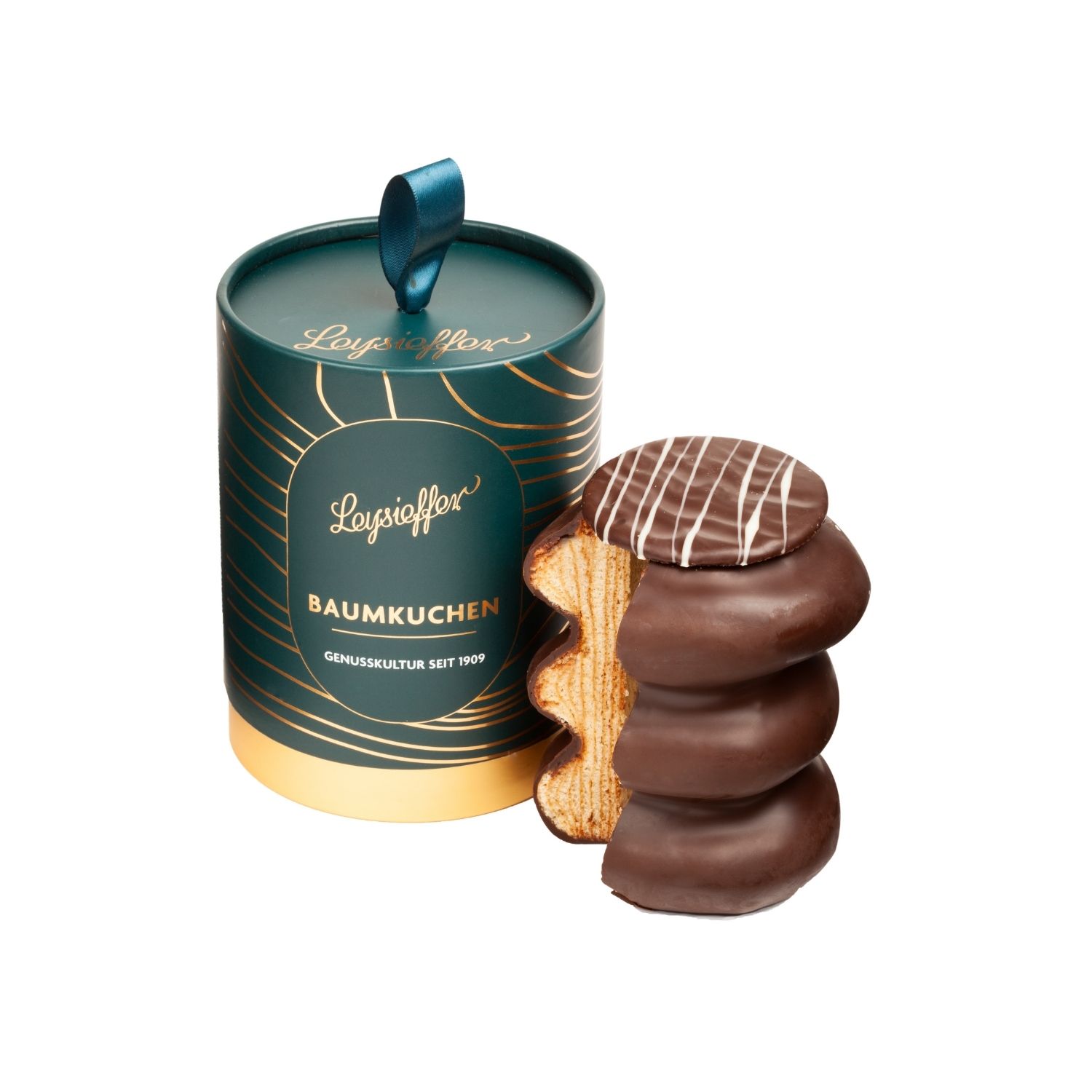Baumkuchen/Tree cake: "The master of cakes" is full of layers and stories.
A great deal of craftsmanship, experience and patience are required when Leysieffers confectioners prepare the famous Baumkuchen. It is not without reason that he is called "the master of cakes" and as the confectioner's supreme discipline he is also the bakers' guild sign. But what is it that makes him so special?
Layer upon layer upon layer...
Butter, eggs, sugar and flour - the ingredients themselves could not be simpler. It is the preparation itself that makes it so special, and the confectioners at Leysieffer have an excellent command of it: First, the ingredients, whose proportions must always be exactly the same, are whipped until foamy. Strict attention is paid to ensuring that the dough has the right, not too firm consistency. The confectioner then dips a beechwood roller into the dough and uses a special forming technique - a kind of comb - to create the distintictive contour. Then the dough layer is baked in the oven over an open fire. When it is ready, the next layer of dough is placed on top and everything is baked again. The whole procedure is repeated layer by layer - up to 20 times, depending on the size of the finished cake. For Leysieffer confectioners, baking Baumkuchen is almost a meditative experience.
The finished Baumkuchen is then cut into individual rings and is sold either "au natural" or dipped in chocolate (milk or dark). Leysieffer Baumkuchen are among the most popular christmas gifts, especially as a culinary, delicious and regal gift.
Stories upon stories ...
Baumkuchen has a long tradition, not only in Germany. The first recipes were discovered in an Italian cookbook from 1426. In 1450 the first German recipe appeared. Already in the 15th century the Baumkuchen was a popular wedding cake in Nuremberg and Frankfurt a. M. In Lithuania and Poland the Baumkuchen is also a traditional specialty. Today, it is also growing in popularity in Japan.
Over the centuries baking method changed from bread-like dough, which was baked in individual rings and later in whole pieces on a roller, to the layered application of thin dough. The recipes also changed over time: While in the 17th century, nutmeg, cinnamon and cardamom were used for the dough instead of sugar for seasoning and sugar and rose water instead of chocolate for the glaze, the recipe that is used today was developed in the 18th century.
By the way, the name Baumkuchen was not created until 1682, when Johann Sigismund Elsholtz, the personal physician of Elector Friedrich Wilhelm von Brandenburg, christened the pastry in his dietary cookbook. In former times it was known under different names like Prügelkrapfen, Spießlaib, Notbrot, cake on a spit, spit cake or Prügelkuchen.

